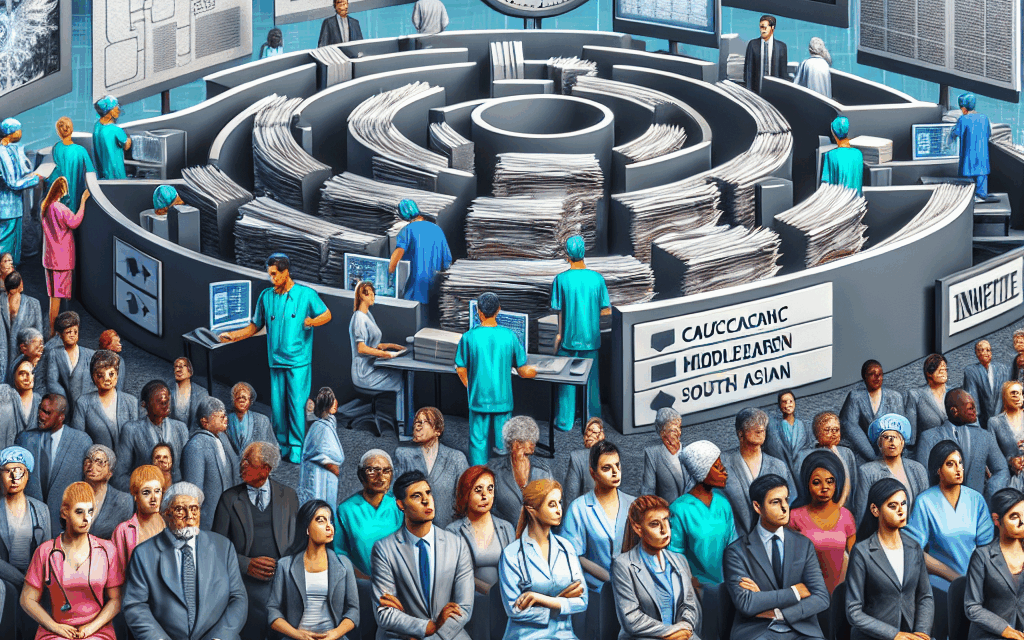The Impact of Data Silos on Patient Care and Provider Efficiency
In the rapidly evolving landscape of healthcare, the integration of technology and data management has become paramount. However, one of the most significant challenges that healthcare organizations face is the existence of data silos. These silos can severely hinder patient care and provider efficiency, leading to fragmented information, increased costs, and suboptimal health outcomes. This article delves into the impact of data silos on patient care and provider efficiency, exploring the causes, consequences, and potential solutions to this pressing issue.
Understanding Data Silos in Healthcare
Data silos refer to isolated pockets of information that are not easily accessible or shared across different departments or systems within an organization. In healthcare, this can manifest in various forms, such as electronic health records (EHRs) that do not communicate with one another, disparate systems for billing and patient management, or even manual processes that prevent data sharing.
Several factors contribute to the creation of data silos in healthcare:
- Legacy Systems: Many healthcare organizations still rely on outdated technology that is not designed for interoperability.
- Regulatory Compliance: Concerns about patient privacy and data security can lead organizations to restrict data sharing.
- Organizational Culture: A lack of collaboration between departments can foster an environment where data is hoarded rather than shared.
- Vendor Lock-In: Healthcare providers may be tied to specific vendors that do not support data exchange with other systems.
- Resource Constraints: Limited budgets and staffing can hinder efforts to integrate systems and share data effectively.
Understanding these factors is crucial for addressing the issue of data silos and their impact on patient care and provider efficiency.
The Consequences of Data Silos on Patient Care
The existence of data silos can have dire consequences for patient care. When healthcare providers do not have access to comprehensive patient information, it can lead to a range of issues, including:
- Increased Medical Errors: Incomplete patient records can result in misdiagnoses, inappropriate treatments, and medication errors.
- Delayed Treatment: Lack of timely access to patient data can slow down decision-making processes, delaying critical interventions.
- Fragmented Care: Patients may receive care from multiple providers who do not communicate effectively, leading to disjointed treatment plans.
- Patient Dissatisfaction: Patients may feel frustrated when their providers lack access to their complete medical history, leading to a lack of trust in the healthcare system.
- Increased Healthcare Costs: Inefficiencies caused by data silos can lead to unnecessary tests, duplicate procedures, and longer hospital stays.
For example, a study published in the Journal of the American Medical Association found that nearly 20% of patients experienced a medical error due to incomplete information during transitions of care. This statistic underscores the critical need for integrated data systems that provide a holistic view of patient health.
Provider Efficiency and the Burden of Data Silos
Data silos not only impact patient care but also significantly affect provider efficiency. Healthcare professionals are often burdened by the inefficiencies created by fragmented data systems, which can lead to:
- Increased Administrative Work: Providers spend excessive time searching for patient information across multiple systems, detracting from time spent with patients.
- Burnout: The frustration of navigating disjointed systems can contribute to provider burnout, leading to decreased job satisfaction and higher turnover rates.
- Reduced Collaboration: When data is siloed, interdisciplinary collaboration becomes challenging, hindering the ability to provide coordinated care.
- Limited Data Analytics: Providers miss out on valuable insights that could be gleaned from comprehensive data analysis, impacting quality improvement initiatives.
- Inconsistent Patient Engagement: Providers may struggle to engage patients effectively when they lack access to complete health information.
A case study from a large hospital system in California illustrates these challenges. The hospital implemented a new EHR system but failed to integrate it with existing billing and scheduling systems. As a result, providers reported spending up to 30% of their time on administrative tasks rather than direct patient care, leading to decreased patient satisfaction and increased provider frustration.
Strategies for Breaking Down Data Silos
Addressing the issue of data silos requires a multifaceted approach that involves technology, policy changes, and cultural shifts within healthcare organizations. Here are several strategies that can help break down data silos:
- Invest in Interoperable Systems: Healthcare organizations should prioritize the adoption of EHRs and other systems that are designed for interoperability, allowing for seamless data exchange.
- Standardize Data Formats: Establishing common data standards can facilitate easier sharing and integration of information across different systems.
- Foster a Culture of Collaboration: Encouraging communication and collaboration between departments can help break down barriers to data sharing.
- Implement Data Governance Policies: Establishing clear policies around data access and sharing can help ensure that patient information is used appropriately while maintaining privacy and security.
- Leverage Health Information Exchanges (HIEs): Participating in HIEs can enable healthcare organizations to share patient data with other providers, improving care coordination.
For instance, the implementation of a statewide HIE in New York has allowed providers across the state to access patient records from various healthcare settings, significantly improving care coordination and reducing duplicate testing.
The Role of Technology in Mitigating Data Silos
Technology plays a crucial role in addressing the challenges posed by data silos. Several technological advancements can help healthcare organizations improve data sharing and integration:
- Cloud Computing: Cloud-based solutions can facilitate real-time data sharing and collaboration among healthcare providers, regardless of their location.
- Application Programming Interfaces (APIs): APIs can enable different systems to communicate with one another, allowing for seamless data exchange.
- Artificial Intelligence (AI): AI can help analyze large datasets to identify patterns and insights that can improve patient care and operational efficiency.
- Blockchain Technology: Blockchain can provide a secure and transparent way to share patient data while maintaining privacy and security.
- Patient Portals: Empowering patients with access to their health information through portals can enhance engagement and facilitate better communication with providers.
A notable example of technology mitigating data silos is the use of APIs by major EHR vendors. By allowing third-party applications to access patient data, providers can leverage innovative tools that enhance care delivery and improve patient outcomes.
Conclusion: The Path Forward
The impact of data silos on patient care and provider efficiency is profound and multifaceted. As healthcare continues to evolve, addressing the challenges posed by fragmented data systems is essential for improving health outcomes and enhancing the overall patient experience. By investing in interoperable technology, fostering a culture of collaboration, and implementing effective data governance policies, healthcare organizations can break down data silos and create a more integrated and efficient healthcare system.
In summary, the key takeaways from this article include:
- Data silos hinder patient care by increasing medical errors, delaying treatment, and leading to fragmented care.
- Provider efficiency is compromised due to increased administrative burdens and reduced collaboration.
- Strategies for breaking down data silos include investing in interoperable systems, standardizing data formats, and fostering a culture of collaboration.
- Technology plays a vital role in mitigating data silos through cloud computing, APIs, AI, and blockchain.
- A comprehensive approach is necessary to create a more integrated healthcare system that prioritizes patient care and provider efficiency.
As we move forward, it is imperative for healthcare organizations to prioritize the elimination of data silos to ensure that both patients and providers can thrive in a more connected and efficient healthcare environment.





